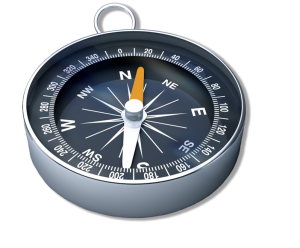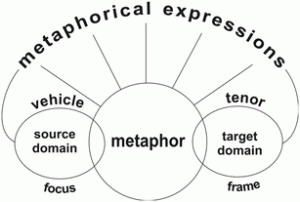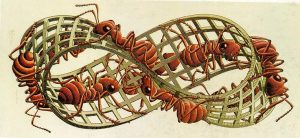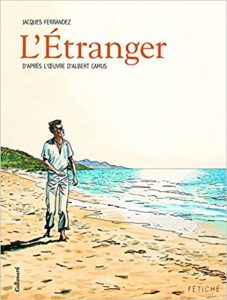WIDE IMAGE 2
 2) Childhood Memory: Einstein’s Themata.
2) Childhood Memory: Einstein’s Themata.
A heuristic rule is: any hermeneutics may become heuretics. Holton developed the Image of Wide Scope as hermeneutic, a mode of analysis and interpretation of the completed careers of productive people. The gambit of mystory shifts focus to the thematic, to discovery, as a rhetoric to generate a hypothetical wide image. Since the wide image is fully formed by the time students reach college, the mystory assumes that it may be composed and designed speculatively. One feature that recurs through these biographical studies of creative people is the importance of a scene of memory from childhood. Prototype is Albert Einstein, studied in depth by Holton, and we will refer to his history as a template to test for ourselves. It is possible with completed careers to observe the correspondence between the childhood scene and the disciplinary invention (between the compass and the physics of electromagnetism).
We can go back even further when searching for the point where the thematic commitment to the continuum was formed. It is well known that as a child of four or five, Einstein experienced what he called a wonder when his father showed him a simple magnetic pocket compass. It was an experience to which Einstein often referred. His friend Moszkowski reported him in 1922 to have said, “Young as I was, the remembrance of this occurrence never left me.” His biographer Seelig wrote in 1954 that the compass to this day is vividly engraved in his memory, because it practically bewitched him. In his autobiography, written at the age of sixty-seven, we read: “I can still remember –or at least I believe I can remember–that this experience made a deep and lasting impression on me. Something deeply hidden had to be behind things.”
This scene is most suggestive. There is the mysterious invariance or constancy of the compass needle, ever returning to the same direction, despite the fact that the needle seems free from any action-by-contact of the kind that is usually unconsciously invoked to explain the behavior of material things; despite the vagaries of motion one may arbitrarily impose on the case of the compass from the outside; and regardless of personal will or external Zwang or chaos. If Einstein remembered it so well and referred to it so often, it may be because the episode is an allegory of the formation of the play-ground of his basic imagination. (Gerald Holton, Thematic Origins of Scientific Thought).
 –Exercise. There is no need to understand all the features of mystory, wide image, heuretics, popcycle, before beginning the discovery and design project. We may begin with a memory exercise, to notice what scene remains in memory. The instructions are just to reflect for a few minutes on one’s early childhood, to observe what may appear, to take note, to save the scene for development later on. Record the memory in anecdote form (300-word flash fiction) illustrated with found images. The exercise may also be applied analytically to biographies of interest. We will inventory a number of cases of such early memories.
–Exercise. There is no need to understand all the features of mystory, wide image, heuretics, popcycle, before beginning the discovery and design project. We may begin with a memory exercise, to notice what scene remains in memory. The instructions are just to reflect for a few minutes on one’s early childhood, to observe what may appear, to take note, to save the scene for development later on. Record the memory in anecdote form (300-word flash fiction) illustrated with found images. The exercise may also be applied analytically to biographies of interest. We will inventory a number of cases of such early memories.


